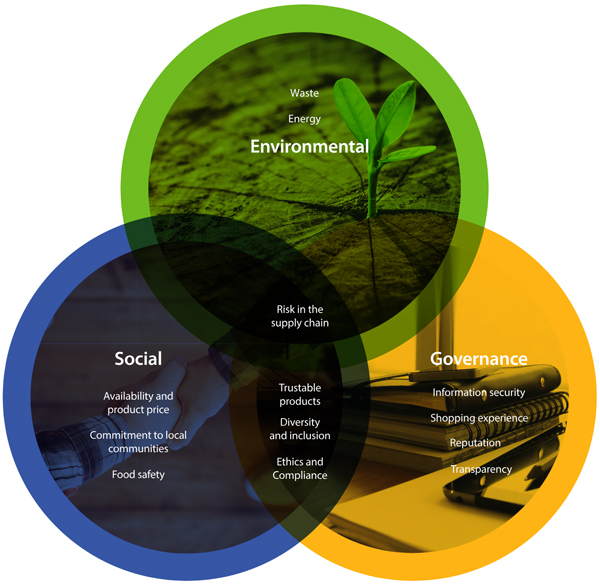

We aspire to create Shared Value
by building a business that benefits all our
stakeholders, making us the most trusted omnichannel chain and one of which they can feel very proud.
Methodology

The channels used to dialogue with our stakeholders

12 focus groups
-
1 for store and operations associates
-
1 for NGOs
-
1 for suppliers
-
1 for opinion leaders
-
8 for customers from different formats

Deep dives with our institutional investors.

On-line surveys for associates, customers and suppliers
Materiality Matrix
Filters
-
Pilars
-
ESG
-
Relevance
Classification of material topics in ESG




















